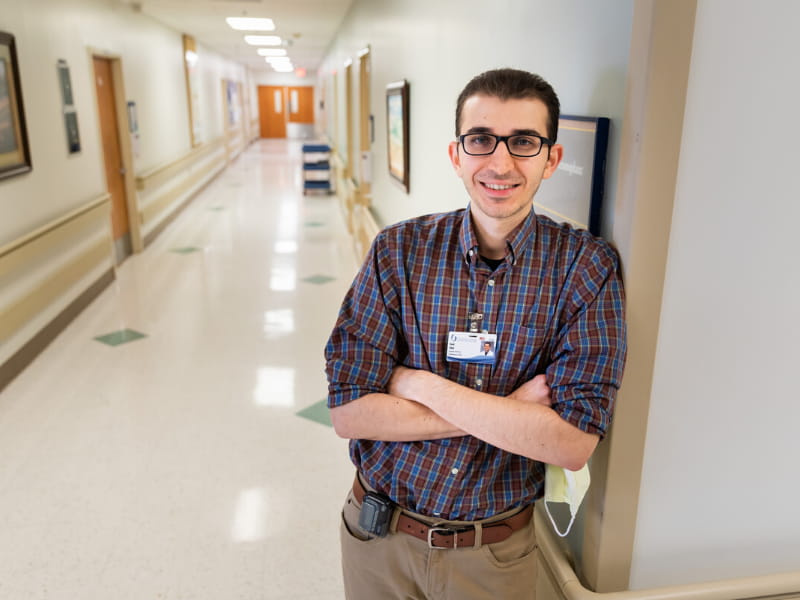Most cancer drug trials need better design, study shows

Two-thirds of clinical trials that led to approved anti-cancer drugs had significant limitations that could mask the true effectiveness of a drug, according to a new study in JAMA Internal Medicine.
Dr. Talal Hilal, assistant professor of medicine at the University of Mississippi Medical Center, is the lead author of the study.
“The main point is that cancer clinical trials are not perfect and can have important limitations that we must consider,” said Hilal, a member of the UMMC Cancer Center and Research Institute. “Just because a drug is FDA approved doesn’t mean it should be prescribed in all situations for all patients.”
Published June 15, the study examined 187 trials for 176 cancer drugs approved by the U.S. Food and Drug Administration between June 2014 and July 2019. Hilal and his collaborators were interested in four kinds of limitations to the trials. Three focused on study design: single-arm trials, suboptimal control arms and inappropriate patient crossover to different study arms. The fourth, lack of overall survival benefit, is a limitation based on study results. They found that 67 percent of trials had one or more of these limitations.
The gold-standard design for a drug trial is a randomized, double-blind study, where patients receive either standard of care or the test treatment, and neither them nor their physician know which they received. This allows the researchers to know if a new drug is safe or effective without bias.
In the case of some cancers, where there may be limited or no existing care options, Hilal said, it may be reasonable to forego a randomized trial. Instead, all patients receive the test drug without controls, also known as a single-arm trial.
“Lots of cancer drugs are approved based on results from non-randomized clinical trials, usually with the stipulation that we need to run randomized trials later,” Hilal said. However, he says these follow-up trials do not always occur.
Of the trials his study considered, thirty-four percent used only a single-arm. Among the randomized trials, 14 percent used inappropriate crossover, 25 percent had a suboptimal control and 30 percent lacked a survival benefit.
On survival benefit, Hilal said that about half of the trials in this study used what is known as progression-free duration or PFS to measure a drug’s efficacy. This is not an appropriate endpoint for all forms of cancer, he added, but it is a measure that may be completed faster than tracking overall survival. However, the impact of PFS on patients’ quality of life is not always apparent.
The pressure to approve new treatments quickly comes up against another force that slows down the research process: clinical trials can take many months or years to be open for enrollment. Cancer patients do not always have that much time to wait until a trial moves from concept to initiation, Hilal said, and regulatory bodies should work to find ways to make the process faster. In the past few months, there have been signs that they can increase efficiency in this area.
“We now see how fast clinical trials can move from concept to enrolling patients during the ongoing COVID-19 pandemic,” Hilal said.
Hilal says there is a fair amount of subjectivity and consideration involved in deciding whether clinical trials are designed well. For instance, the standard of care for a disease depends on the country and which treatments are approved for use there. In addition, he and his co-authors would sometimes come to different conclusions about whether a particular trial contained appropriate control groups or if they used “strawman comparisons,” he said.

Dr. Vinay Prasad, an associate professor at the University of California-San Francisco and study co-author, says that improving how we test and eventually prescribe new cancer treatments will require additional oversight.
“Our paper should raise concerns that the majority of cancer drugs come to market with huge gaps in our knowledge. We already have the agency that is capable of fixing this, and that is the FDA,” he said. “Reforming the rules governing drug approval could help to shift the compass of cancer drug development back to the patient.”
In the meantime, Hilal says physicians should also be more diligent and upfront with their patients about what previous trials may indicate about a drugs’ effectiveness at treating their condition.
“When you prescribe any FDA-approved agent, you must be aware of the limitations,” Hilal said. “Don’t just look at the label. Be open with patients about the uncertainties.”


